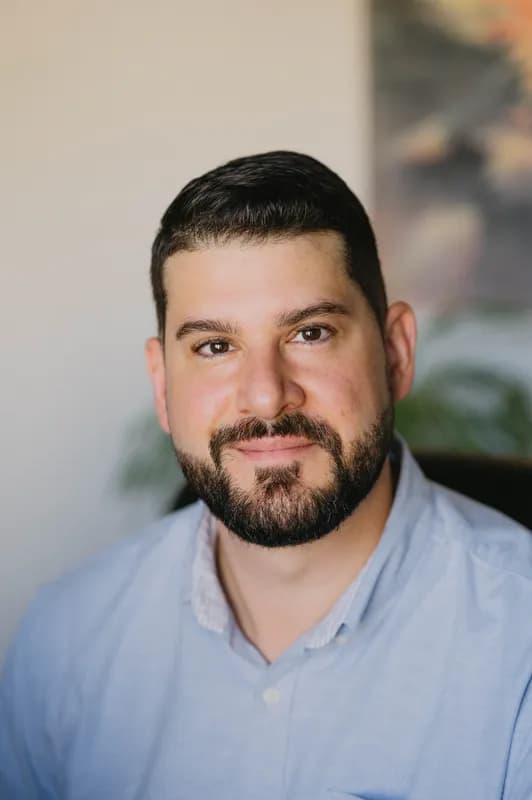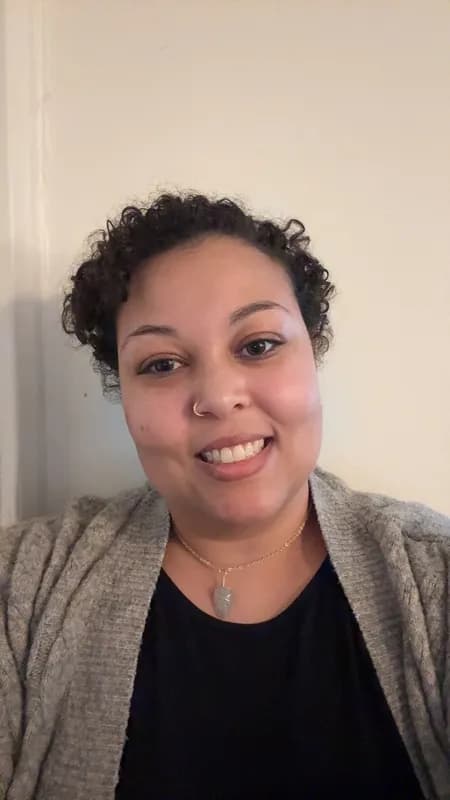Picture this: It's 10:07 PM in Toronto. Sarah collapses onto her couch, laptop balanced precariously on a pile of unfolded laundry. Another brutal day behind her: late meetings that could've been emails, a sad desk sandwich for lunch, and a TTC delay that made her question all her life choices.
But here she is, finally doing the thing she's been putting off for months: looking for a therapist.
Twenty-three browser tabs are open. Twenty-three. Each one shows another smiling face promising to "help you navigate life's challenges" or "provide a safe space for healing." They're all starting to blur together like a LinkedIn fever dream.
Sarah isn't looking for the perfect therapist (spoiler alert: they don't exist). She's looking for her therapist. Someone who feels real. Someone who might actually get it.
And here's the plot twist: while Sarah scrolls past dozens of qualified professionals, somewhere across the city, Dr. Martinez is wondering why her calendar has more tumbleweeds than appointments, despite her stellar credentials and genuine passion for helping people.
The problem? It's rarely about qualifications. It's about presentation.
The 10-second make-or-break moment
Before Sarah reads a single word about your therapeutic approach or impressive education, her brain has already made a decision. In roughly ten seconds, less time than it takes to microwave leftover pizza, she's either clicking into your profile or scrolling to the next one.
Harsh? Maybe. But that's how human psychology works in our attention-deficit digital world.
Think of your profile header as a first date outfit. You wouldn't show up in yesterday's pajamas (we hope), but you also wouldn't wear a three-piece suit to grab coffee. The goal is authentic confidence that says, "Hey, I'm approachable and I've got my act together."
Your photo: the trust trigger that makes or breaks everything
Here's what's happening in Sarah's brain when she sees your photo: her amygdala (the brain's security guard) is running a lightning-fast safety check. "Friend or foe? Safe or sketchy? Warm human or robot in a blazer?"
📸 Photos that make clients pause (in a good way):
✅ Natural lighting that doesn't make you look like you're being interrogated
✅ A genuine smile that reaches your eyes
✅ Clothing that reflects how you actually show up to sessions
✅ A background that's not your messy home office
Photos that make clients scroll faster than TikTok:
❌ Overly formal headshots that scream "I charge $500/hour and judge your life choices"
❌ Blurry selfies taken in your car
❌ Photos where you look like you'd rather be anywhere else
Video: your secret technique for building instant rapport
If photos build trust, videos build connection. A 20-second clip can do what paragraphs of text can't—show your actual personality. Sarah wants to know: Do you sound like someone she could actually talk to about her messiest thoughts?
💡Pro tip:
Record yourself like you're talking to a friend, not delivering a TED talk. Share what therapy feels like with you, not just what you offer. Think "warm conversation" not "corporate training video."
Stop being another fish in the sea of sameness
Once your header passes Sarah's test, she's scrolling with one burning question: "What would it actually feel like to sit across from this person?"
This is where most therapist profiles hit the wall.
Picture this tragic scene: "I utilize CBT, DBT, EMDR, ACT, IFS, and mindfulness-based interventions to facilitate optimal therapeutic outcomes through evidence-based modalities."
Sarah's brain: "I feel like I need therapy just from reading that sentence."
Here's the uncomfortable truth: listing every acronym you've ever studied doesn't make you look more qualified. It makes you look like you're trying to be everything to everyone, which, paradoxically, makes you appealing to no one.
Instead, try this approach: Pick just a few methods that truly drive your work, then explain them like you're talking to your neighbor over the fence. "I help people untangle the stories they tell themselves about why they're not good enough" hits differently than "I provide cognitive restructuring interventions."
Remember, Sarah doesn't need to understand what EMDR stands for. She needs to understand what it feels like to work with you.
The credibility check: "Is this person actually legit?"
Sarah's interested now. You seem human, relatable, maybe even helpful. But suddenly her practical brain kicks in with a very reasonable question: "Wait, can I trust this person with my deepest secrets and biggest fears?"
This is credibility checkpoint time. Your registration number, professional associations, and education suddenly matter a lot. But here's the thing: you don't need to sound like a medical textbook. You just need to be clear and confident about your qualifications.
The sweet spot: Professional credibility wrapped in accessible language. "Registered Clinical Counsellor with the BC Association of Clinical Counsellors" is much more reassuring than a mysterious string of letters after your name that nobody can decode.
The final hurdle: "Can I work with you?"
Sarah's heart says yes, her brain says yes, but now her calendar app is giving her anxiety. Where are you located? Do you offer virtual sessions? What do you charge? Are you even accepting new clients?
If these crucial details are buried in paragraph seventeen of your bio or completely missing, you've just lost a potential client at the finish line. It's like planning the perfect date and then forgetting to mention where to meet.
The practical stuff that seals the deal:
✅ Clear location information (bonus points for multiple locations)
✅ Virtual therapy options (because sometimes pants are optional)
✅ Transparent pricing (nobody likes financial surprises)
✅ Current availability (nothing hurts like "wait list only")
The human touch: Because you're not a therapy robot
Here's something most directories miss: clients want to know you're a real person with a life outside the therapy room. They're not looking for your vacation photos, but a glimpse of your humanity goes a long way.
Maybe it's a picture of your hiking boots, your rescue dog photobombing your workspace, or the coffee mug collection that's gotten slightly out of control. These details don't make you less professional. They make you more relatable.
Sarah isn't just choosing a therapist; she's choosing a human being she hopes to trust with her story. Give her something to connect with.
How Stellocare’s changing the game
Look, many therapist directories feel like they were built with credentials in mind, not the actual client experience. They can be overwhelming when you're already feeling vulnerable, and sometimes lack the warmth that people need when they're taking that brave first step.
That's exactly why we built our platform differently. Every feature exists for one reason: to help the right clients find the right therapists faster.
What makes us different:
✅ Smart first impressions: Your photo, greeting, and video are positioned exactly where anxious clients look first
✅ Multilanguage support: Not only our website, but you can actually greet the client in the language you offer
✅ Clarity over clutter: We provide a limited but meaningful number of expertise spaces so you don't sound like alphabet soup
✅ Real-world flexibility: Multiple clinics, locations, virtual options, and customizable FAQs that reflect how you actually practice
✅ Human touches: Space for the personal details that build connection before the first session
We're not just another directory. We're advocates for authentic connection in a digital world that often forgets the human element.
Your profile, your story, your choice
Every night, thousands of Canadians are searching for someone who can help them make sense of their world. They're not looking for perfection wrapped in clinical jargon. They're looking for competence wrapped in humanity.
Your profile is your story. Make it one that the right clients feel ready to be part of.
You don't need a complete platform overhaul to start making changes today. Whether you're updating an existing profile or building from scratch, focus on connection over credentials, clarity over complexity, and authenticity over perfection.
But if you're ready to showcase your practice on a platform designed around how clients actually search and choose therapists, where your expertise and your humanity get equal billing, we'd love to help you tell your story better.
Because you're not just another therapist in the directory. You're someone's answer to a really hard question. Let's make sure they can find you.
Because you deserve more than a listing. You deserve to be seen.
About Stellocare
This insight comes from Stellocare, Canada’s trusted network of verified mental health professionals. Connect with our therapists today by asking our AI, browsing our list, or requesting a personal match from our social worker.


























